
by Russell Noga | Updated April 26th, 2025
Which Medicare Supplement Plans Hawaii suit your needs best? This article breaks down your options and helps you make an informed choice.
Key Takeaways
- Medicare Supplement plans, or Medigap, help cover out-of-pocket costs of Original Medicare, with various standardized plans labeled A to N offering differing levels of coverage.
- Plan G is currently the most comprehensive Medigap option available in Hawaii, while Plan F is unavailable to new enrollees; Plan N presents a cost-effective alternative with lower premiums.
- The Medigap Open Enrollment Period, which lasts for six months after turning 65, is crucial for securing coverage without medical underwriting, ensuring beneficiaries can choose a plan that fits their needs.
Compare 2026 Plans & Rates
Enter Zip Code
Top Medicare Supplement Plans Hawaii: Your Guide to Medigap Coverage

Medicare Supplement plans, also known as Medigap, are optional private insurance designed to help cover out-of-pocket costs that Original Medicare does not pay. These plans are essential for reducing overall medical expenses for beneficiaries, covering expenses such as deductibles, copayments, and coinsurance. Choosing a Medigap plan can significantly reduce out-of-pocket expenses, providing greater financial stability for healthcare needs.
In Hawaii, Medigap policies are standardized and labeled by letters ranging from A to N, each offering varying levels of coverage. For example, Plan G is the most comprehensive option available in Hawaii, providing extensive coverage without the gaps often seen with Original Medicare. However, Plan F, once the most comprehensive plan, is no longer available to new enrollees who turned 65 after January 1, 2020.
Beneficiaries in Hawaii often choose Medigap plans to fill coverage gaps in Original Medicare and to have greater flexibility in choosing healthcare providers. Medigap plans work alongside Original Medicare by covering costs after Medicare has paid its share. This combination of coverage ensures that beneficiaries can receive the care they need without worrying about excessive out-of-pocket expenses.
Introduction
Medicare is a federal program designed for individuals aged 65 and older, as well as certain younger people with disabilities. For Hawaii residents, understanding the various Medigap plans available is crucial to choosing the best option for their healthcare needs. With the right Medicare Supplement plan, you can ensure comprehensive coverage and financial security, no matter your health conditions.
Choosing the right Medigap plan involves understanding the benefits and coverage each plan offers. It’s about not only covering costs but also ensuring peace of mind and access to high-quality healthcare. Whether you need coverage for foreign travel exchange or specific health conditions, knowing your options will help you make an informed decision.
Understanding Medicare Supplement Plans in Hawaii 2026
Medicare Supplement Plans, or Medigap plans, are optional private insurance plans that help cover the costs of Medicare services. These plans act as secondary insurance after Medicare, covering gaps in payments for services such as coinsurance and deductibles from Original Medicare. Essentially, they reduce the out-of-pocket costs incurred from medical expenses, providing significant financial relief for beneficiaries.
Medigap policies are standardized and named with letters from A to N, each offering different benefits. For instance, Plan G is considered the most comprehensive option in Hawaii due to its extensive coverage. Although Plan F offers the most comprehensive coverage, it is no longer available to new enrollees who turned 65 after 2020.
Choosing the right Medigap plan involves considering your healthcare needs and the specific benefits each plan offers.
Types of Medicare Supplement Plans Available in Hawaii
Hawaii offers ten standardized Medigap plans, including both regular and high-deductible versions. Among these, Plans F and G are recognized as the most comprehensive and popular Medigap plans in Hawaii. Plan F is considered the most comprehensive, covering various healthcare costs after Medicare pays. However, it is no longer available for new enrollees post-2020.
Plan G has emerged as a popular alternative for new beneficiaries, offering nearly full benefits except for the Part B deductible. Plan N is another option noted for its lower premiums compared to Plans F and G, though it does come with higher out-of-pocket costs for certain services.
Let’s dive deeper into each of these plans to understand their benefits and limitations.
Plan F: Comprehensive Coverage
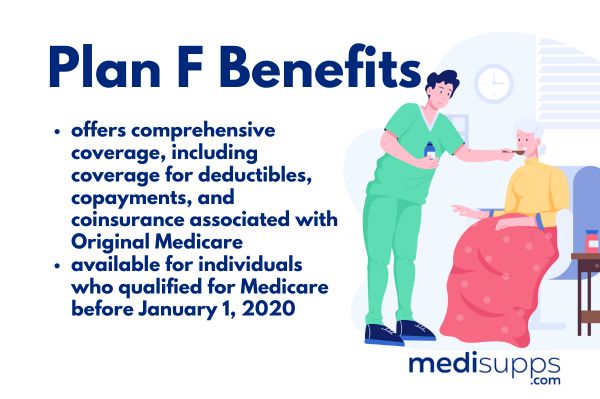
Medigap Plan F covers nearly all medical expenses, including costs associated with skilled nursing facilities and Part B co-insurance or co-payments. This comprehensive coverage extends to Part A co-insurance, blood usage, and hospice care co-insurance. Plan F even covers foreign travel exchanges at 80%, making it a robust option for those who travel frequently.
As of 2023, 11 different insurance companies provide Medicare Supplement Plan F in Hawaii. Despite its popularity, Plan F is no longer available to newly eligible Medicare beneficiaries after January 1, 2020. However, for those who were eligible before this date, Plan F remains a top choice due to its full coverage of almost all medical expenses.
Plan G: Popular Alternative
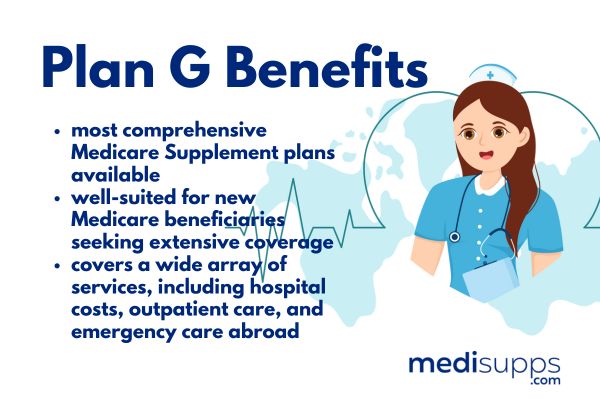
Medicare Supplement Plan G provides substantial coverage, including Part A co-insurance, Part B co-insurance, the first three pints of blood, hospice care co-insurance, skilled nursing facility care co-insurance, Part A deductible, Part B excess charge, foreign travel exchange, and medicare coverage. One significant difference from Plan F is that Plan G does not cover the Part B deductible.
Plan G is a standardized Medigap policy offered by ten different companies in Hawaii, with some even providing additional benefits to enhance its appeal. State Farm is one of the companies recognized for providing excellent coverage options for Plan G in Hawaii.
Plan G’s comprehensive coverage and popularity make it a strong contender for those seeking extensive benefits without the higher premiums of Plan F.
Plan N: Cost-Effective Option

Plan N is considered a cost-effective option due to its lower monthly premiums compared to Plans F and G. However, it may require copayments for certain office visits up to $20 and for emergency room visits up to $50 that do not result in inpatient admission. This trade-off allows for lower monthly premiums while still providing substantial coverage.
Plan N does not cover Part B deductibles and excess charges, but it does cover 80% of foreign travel exchange and provides additional hospital coverage up to an extra year beyond Medicare benefits.
In Hawaii, Plan N is offered by eight different companies, broadening access for beneficiaries. For those looking to balance coverage and cost, Plan N is a viable and affordable option.
Compare Medicare Plans & Rates in Your Area
Costs of Medicare Supplement Plans in Hawaii
The cost of Medicare Supplement plans in Hawaii is influenced by several factors, including age, gender, location, tobacco use, and past coverage rate increases. For example, Plan F premiums are affected by age, discount eligibility, and medical underwriting factors. Understanding these specific factors can help beneficiaries better estimate potential premium costs for each Medigap plan option.
Plan G premiums can also be influenced by age, available discounts, and medical underwriting considerations. Similarly, the cost of Plan N is impacted by age, possible discounts, and medical underwriting. Considering these factors allows beneficiaries to make informed decisions about the Medigap plan that best suits their financial and healthcare needs.
Factors Influencing Medigap Premiums
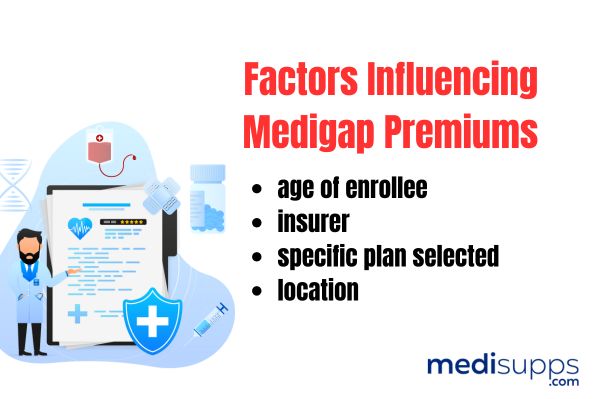
The cost of Medigap plans in Hawaii can fluctuate significantly based on factors such as age, insurer, and the specific plan selected. Tobacco use is a critical factor impacting Medigap premium rates in Hawaii. As individuals age, their Medigap premiums typically increase due to higher healthcare costs associated with older age.
Location also plays a role in determining Medigap premiums, as different areas may have varying healthcare costs and insurers’ pricing strategies. Understanding these factors helps beneficiaries better anticipate premium costs and select the most cost-effective plan for their healthcare needs.
High-Deductible Versions
High-deductible versions of Medigap Plans F and G help lower monthly premiums significantly. Opting for a high-deductible plan allows beneficiaries to enjoy comprehensive coverage with lower monthly premiums. However, these plans come with higher out-of-pocket costs until the deductible is met, and it’s important to consider medigap plans cost when making a decision.
This trade-off between lower premiums and higher deductibles can be a suitable option for those who are relatively healthy and do not anticipate needing extensive medical care. High-deductible plans offer a balance between affordability and comprehensive coverage, making them a viable choice for many Medicare beneficiaries in Hawaii.
How to Enroll in a Medicare Supplement Plans Hawaii 2026
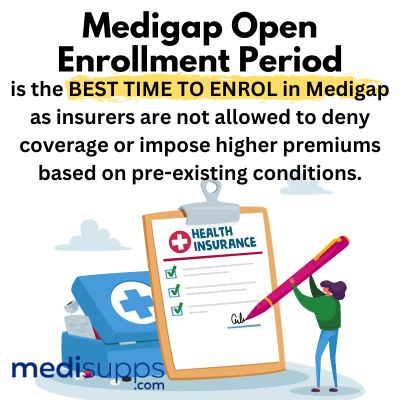
The best time to purchase a Medigap plan is during the initial six-month Medigap Open Enrollment Period, which begins on the first day of the month when you turn 65 and are enrolled in both Medicare Parts A and B. During this period, insurance companies cannot use medical underwriting to reject applications or adjust premiums, ensuring that beneficiaries can obtain coverage regardless of preexisting health conditions.
Begin enrollment in a Medigap plan by ensuring you have Original Medicare (Part A and B) coverage. Contact the insurance company to confirm eligibility and complete the application process. Before enrolling, consider premium costs and coverage levels to choose the plan that best meets your healthcare needs.
Comparing Medicare Supplement Plans and Medicare Advantage Plans
Medicare Supplement Plans, also known as Medigap, can only be provided by private insurance companies that are approved by Medicare. Similarly, Medicare Advantage Plans must also be offered by Medicare-approved carriers. However, you cannot have both Medigap and Medicare Advantage Plans at the same time; they are mutually exclusive. Medigap plans can only be used with Original Medicare, not with Medicare Advantage plans.
When comparing Medigap and Medicare Advantage plans, consider premium costs, coverage options, and the reputation of the insurer. Availability in your area is also crucial when choosing a Medicare plan.
If someone switches from a Medigap plan to a Medicare Advantage plan, they can revert back to Original Medicare and regain their Medigap coverage within a 12-month grace period.
Prescription Drug Coverage with Medigap Plans
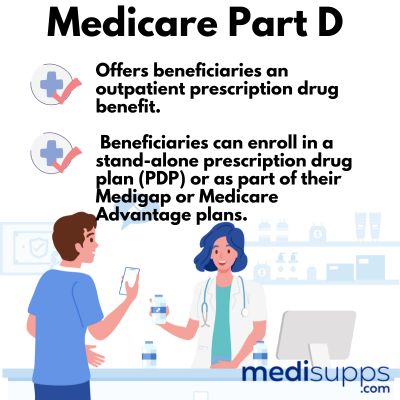
Medigap plans cannot include prescription drug coverage after 2006. Individuals should purchase a Medicare Part D plan for prescription drug coverage. This is essential for obtaining the necessary benefits. Coverage for outpatient prescription drugs is provided by Medicare Advantage plans, employer-sponsored plans, or standalone Medicare Part D plans.
If your Medigap plan covers drugs and was bought before 2006, you are ineligible for a Part D plan. This rule prevents enrollment in a Part D plan based on that specific coverage. Understanding these limitations ensures you have the necessary coverage for your prescription drug needs.
Additional Resources for Medicare Beneficiaries in Hawaii
Navigating Medicare can be overwhelming, but fortunately, there are many resources available to help beneficiaries in Hawaii. The Hawaii State Health Insurance Assistance Program (SHIP) offers free, unbiased counseling to help Medicare beneficiaries understand their options. Hawaii SHIP also provides educational presentations on Medicare-related topics for seniors and their families.
For more detailed information on Medicare services and coverage options, Medicare.gov and CMS.gov are excellent resources. Both websites offer comprehensive information about Medicare, including plan comparisons and policy details.
Additionally, Nerdwallet.com provides financial advice and tools for comparing insurance options, which can be particularly helpful when selecting a Medigap plan.
Compare 2026 Plans & Rates
Enter Zip Code
Summary
Choosing the right Medicare Supplement Plan in Hawaii is a crucial step towards securing comprehensive healthcare coverage and financial peace of mind. By understanding the different types of Medigap plans—such as Plans F, G, and N—and the factors influencing their costs, beneficiaries can make informed decisions that best meet their needs. Medigap plans fill the gaps left by Original Medicare, covering out-of-pocket expenses and providing extensive benefits.
As you evaluate your options, consider the enrollment periods, compare Medigap with Medicare Advantage plans, and explore additional resources for guidance. By taking these steps, you can ensure that you select the best possible Medicare Supplement Plan for your unique situation, allowing you to enjoy your golden years with confidence and security.
Frequently Asked Questions
What is the best time to purchase a Medigap plan?
The ideal time to purchase a Medigap plan is during your initial six-month Medigap Open Enrollment Period, starting when you turn 65 and are enrolled in Medicare Parts A and B. This ensures you can secure the best coverage options without facing medical underwriting.
Can I have both a Medigap plan and a Medicare Advantage plan?
You cannot have both a Medigap plan and a Medicare Advantage plan simultaneously, as they are mutually exclusive options. It’s essential to choose one that best meets your healthcare needs.
Do Medigap plans cover prescription drugs?
Medigap plans do not cover prescription drugs. For prescription drug coverage, you need to enroll in a Medicare Part D plan.
What factors influence the cost of Medigap premiums?
The cost of Medigap premiums is influenced by factors such as age, gender, location, tobacco use, and past coverage rate increases. Understanding these can help you better anticipate your potential costs.
Speak to the Professionals about Medigap Plans and Original Medicare
If you find understanding the benefits involved with Original Medicare and Medigap Plans challenging, you’re not alone. Whether it’s a Medigap plan, or you want to know more about the Medicare Supplement Plans in Hawaii for 2026, we can help. Call our team at 1-888-891-0229 for a free consultation or complete the contact form on this site, and an expert will call you back at a convenient time.
We have decades of experience advising our clients on the complexities of Medicare and Medigap plans, the benefits, costs and deductibles. We’ll ensure you get the best rate in your state and advice you can trust.



